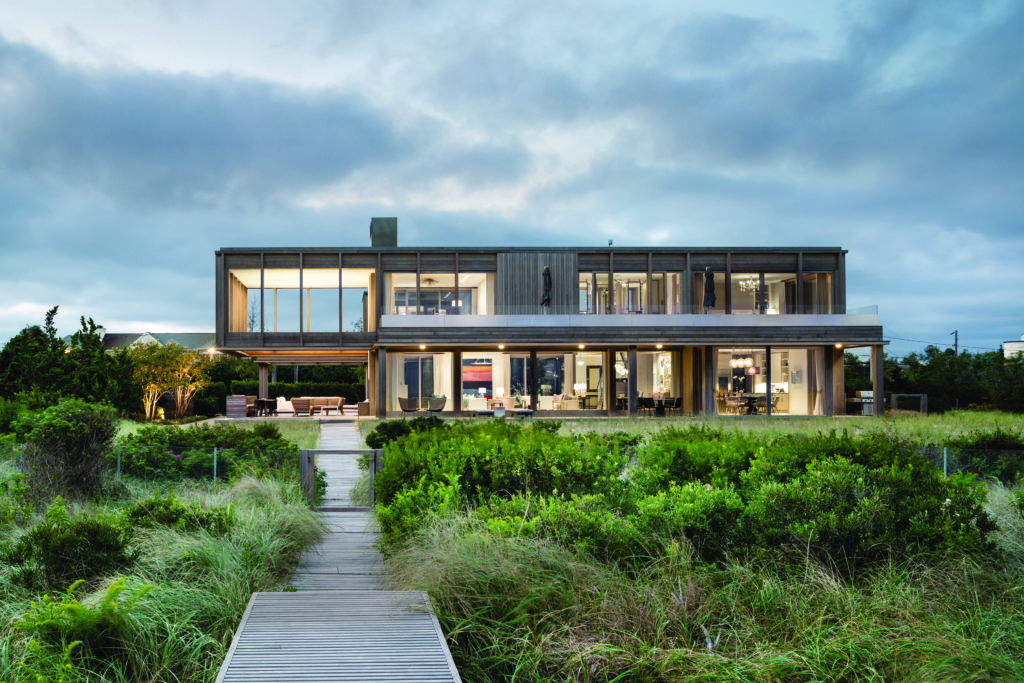
by James Merrell
I love the design of houses, from antique to contemporary modern, so I regularly take time out to look at shelter magazines and blogs. I’m interested in what people are doing—it’s omnivorous, like nibbling chocolates. But sometimes my eyes start to feel strained, my forehead tightens, and I wonder how much more visual input I can take.
Modern living bombards our visual senses above all else. And with the proliferation of screens and so-called virtual (3-D) technologies, architecture runs the risk of becoming virtual, too—experienced more in images than in person. Eyestrain aside, each new viewing format makes our world a little flatter.
Just look at the photo on this page for a moment, and think about what you are experiencing. Does it have real depth, or is it as flat as the paper it’s printed on? Now recognize that this photo triggers only one of your senses—and arguably not your most important spatial sense. Because the camera’s lens records what we can see with a single eye, it defeats the parallax vision we need for walking down the street. It abandons our other senses, leaving them to atrophy.
How important are our other senses when it comes to inhabiting real spaces? Close your eyes right now, where you are sitting, and observe how little your sense of the space you occupy changes. In fact, sound is much more critical to our perception of space. I could probably lob a treat onto my sleeping dog’s bed at the moment, just from the echoes of his snoring behind me.
Recently, I had an experience that started me thinking about how critical all our senses are to the enjoyment of space. I was entering a just-completed project on a house tour with friends, a modern barn, when I noticed my scalp relaxing and a slight tingling at the crown of my head. I had that sensation before, but never taken time to examine it. But this time, as the cheerful conversation of my friends stopped, I recognized that they were feeling this too—something powerful about the way the space was affecting us.
The house itself, a finely detailed 6-bedroom with a limestone entry and bleached-wood interiors, is beautiful, and I say this with pride, but it was not the architecture alone that stopped us. Rather, it was a combination of the house, and the world it framed: the movement of clouds over a pond in winter, the sounds of geese, a dramatically sloping 4-acre terrain that appeared to flow through the glass barn, the warm sunlight piercing its two stories from seemingly every angle. In short, with all our senses firing, sight was no longer dominant.
The experience of space is most pleasurable when felt with all our senses; the camera’s eye is not to be completely trusted. When we focus visual attention on architectural surfaces, we may miss this profound truth: a house is often at its best when the architecture gets out of the way. jamesmerrellarchitects.com





